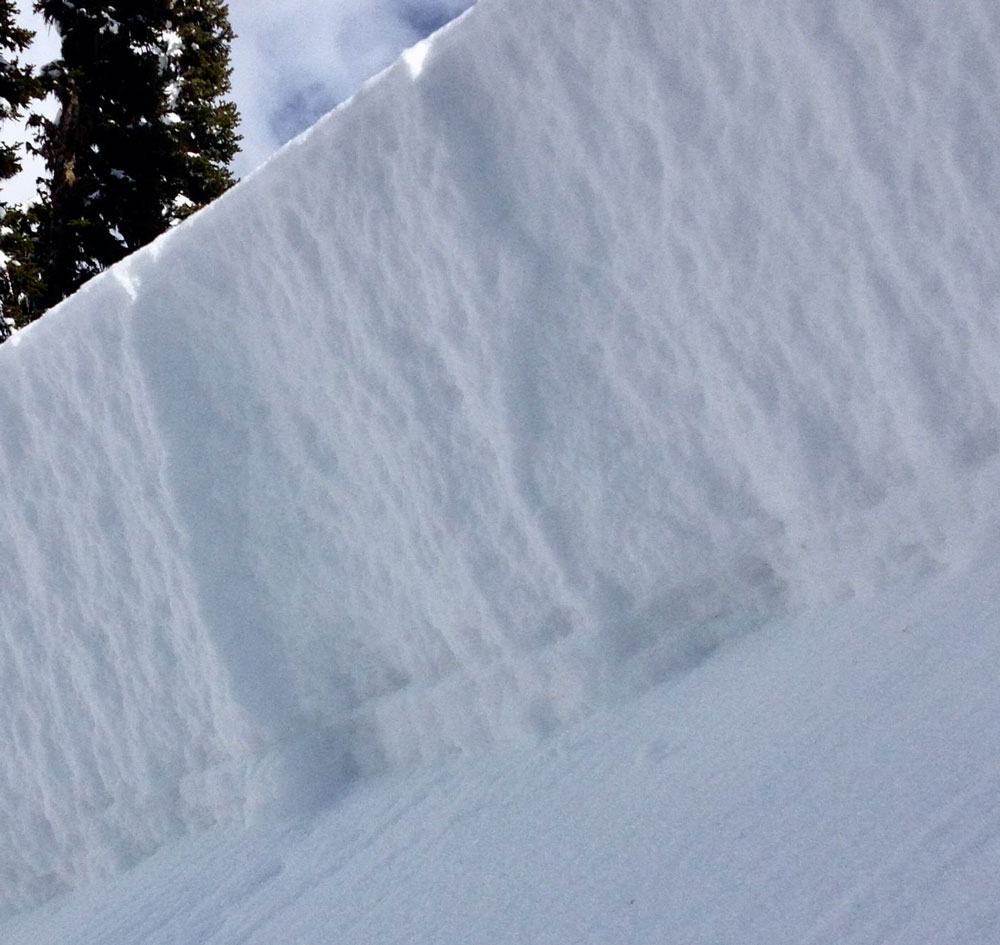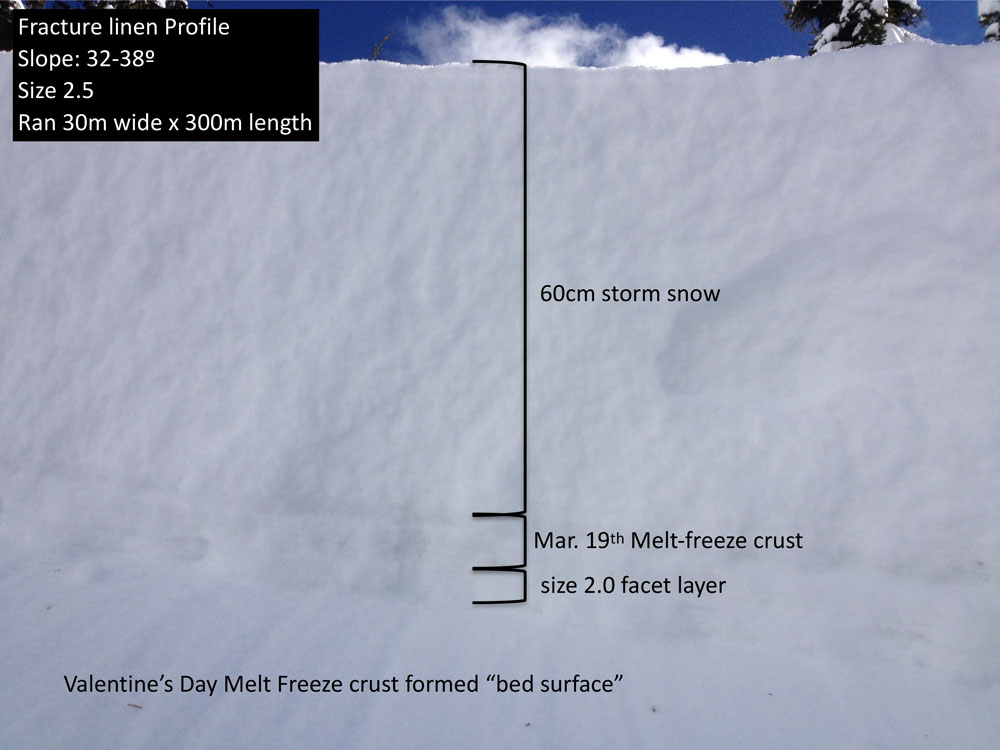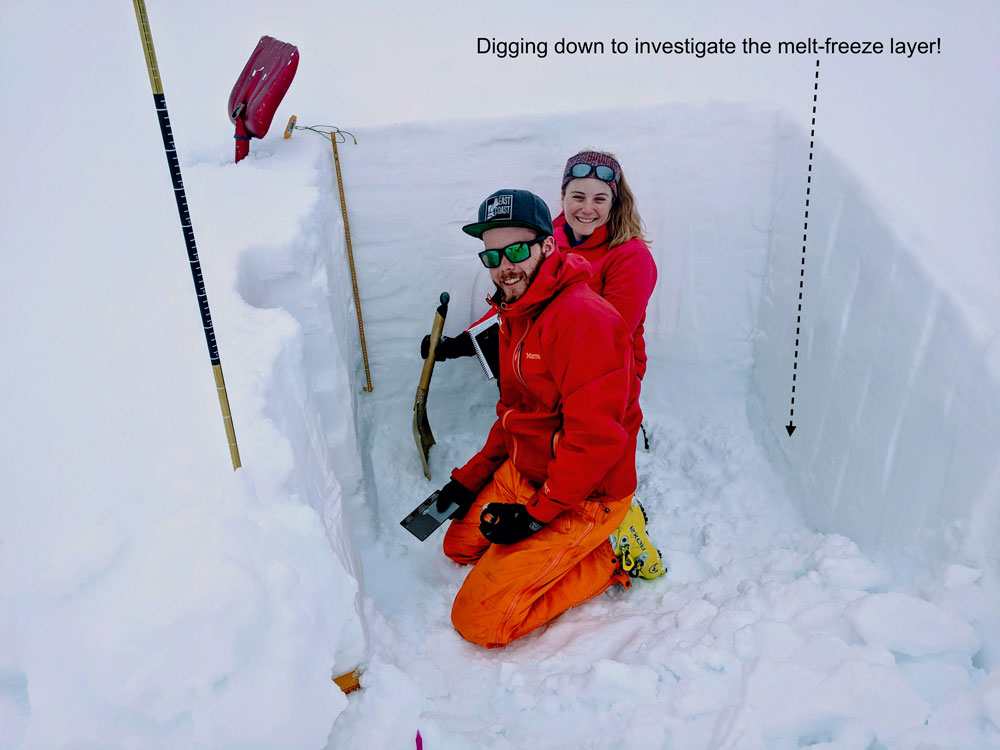Ruminations on Rain Crusts
Today I want to ruminate on rain crusts. Or more specifically, an avalanche problem formed when a melt-freeze layer is buried within an early-season snowpack. The consequential nature of these layers tends to be cyclical , meaning that some years, the buried crust layer goes on to create an avalanche problem, and some years it doesn’t. And, although it’s been a while since this has been a major snowpack issue where I live in British Columbia, it’s worth discussing. Especially because I am sensing that the exploding cohort of new backcountry enthusiasts lack experience with and respect for lower-snowpack melt-freeze layers, which are nearly always surrounded by a durable yet weak layer of larger-grained crystals (facets).
The important question is whether or not a buried melt-freeze crust will become a lingering issue in the snowpack. One early way to assess this potential is to consider how active the early season ski community was prior to the rain event—in other words, how good the skiing has been.
If everyone has been out there “ripping it up,” it’s safe to say there is enough snow to bury ground roughness (think bushes, small trees, boulders). In this instance the crust will provide a smooth bed surface for avalanches to initiate and propagate on once buried. On the other hand, if only the keeners are out there skipping around the rocks and bushes because there’s not enough snow to entice the masses, then rain crusts tend to be tied up in the ground roughness and less of an issue in the long term. Generally speaking, in terms of rain crusts, it’s better to have a later start to the ski season because the colder it is when the snow starts accumulating, the less potential there is for rain to fall on top of an established snowpack.
If the snowpack is already established, then consider how high in the terrain the rain level reached. If the rain level remained at the valley-bottom elevation, then it is also not such an issue, but if it has reached into treeline and alpine elevation terrain—i.e. at the avalanche path start-zone elevation—then it will likely be a potential avalanche concern. Keeping track of the upper limit of the crust formation early on will also inform terrain choices later—we would treat the terrain above and below this elevation differently, such as choosing to ski only above the rain line or only low-angle slopes below it.

Formation Matters
Next, the weather events that created the crust and then buried it are important. Tracking these events can lead to a better understanding of whether the crust bonds within the snowpack, or doesn’t bond and later results in a weak and reactive snowpack layer.
The worst-case scenario is when a break of cold, clear weather comes between formation and burial of the rain crust. This happened in 2003, when a November rain layer froze, was likely covered in a dusting of new snow, and then was exposed to three weeks of clear, cooler weather. During this time, a combination of facets and surface hoar formed on top of the crust prior to its burial by December storms. In January and February of 2003, it reared its ugly head, contributing to the worst series of avalanche accidents in B.C.’s recent history.
A better scenario is where the melt layer freezes into a rain crust during overcast, warmer conditions, where moist new snow falls onto the crust and bonds. Note that if the newly formed crust is only covered in 10 centimeters of snow prior to an outbreak of cold clear weather, it’s just as bad as the former scenario—as that low-density new snow can quickly facet on top of the crust. My observations suggest that if 30 centimeters or more falls and bonds to the crust prior to the clear, cooler conditions, facets are less likely to form on top of the crust, and the avalanche event is more likely to be of short duration early on in the loading cycle. Like with surface hoar, it is better in the long term if there is a major load over the potential weak layer at the time of burial.

The Buried Crust Problem
In terms of the avalanche character that these buried rain crusts create, the one thing you can say is “propagation!” Unlike other weak layers like sun crusts or surface hoar, rain crusts in particular are continuous across the terrain, uninterrupted by changes in aspect or incline, and limited only by the elevation of the rain on snow event. So once a failure occurs at this interface, the tendency is for the slab to propagate. This is compounded by the fact that, because a crust interface tends not to be as delicate as other weak layers, it often it takes a greater load and resulting stiffer slab to make the weak layer fail. This combination favors avalanches size 2 or larger, and at times can be unconstrained by what would normally be considered a terrain boundary.
It also may be a challenge to evaluate the instability of a buried-crust avalanche problem. We don’t always get the feedback we need. Because it takes a deeper slab for the crust layer to fail, this can also lead to what we refer to as “non-event feedback,” i.e. if the layer doesn’t fail the first, second, or third time we ski a slope, we wrongly think it’s safe. Then it becomes easy to unknowingly wander onto a spot where the slab is thinner and more sensitive, as was the case in the Rogers Pass avalanche accident that claimed a life on December 7, 1999 (see Avalanche Accidents in Canada, Volume 5).
Rain crust problems are by their nature unique, but in general I have observed a pattern in terms of how the same melt-freeze crust can cause a repeating cycle of avalanche activity over weeks or even months. Often it begins with a skier-triggered avalanche event when 30-plus centimeters of stiffer snow forms over the crust. Natural cycles usually take more load (60-plus centimeters) before releasing so the first natural avalanches can be in the size 3 range.
As load increases (100-plus centimeters) and time passes (over a month), quite often an equilibrium is reached and the crust layer can become dormant. Periodically during the winter months, the layer may reawaken during periods of snowpack stress (big storms/warm-ups) and appear as isolated, large un-forecasted events (size 3.5-4). In the spring, as snowpack become saturated with free water that loosens cohesion at the crust layer, large wet-slab avalanches become a worry.

How To Tread Safely
So how do we backcountry folks tread safely on top of these early season buried rain crusts? Here are a few suggestions:
Firstly, remember the upper elevation extent of the problem crust. Where there is no crust, there is no problem.
Secondly, I would urge skiers and riders to reign it in for a month or so after the crust is buried. Go have fun, but choose features that are less steep, of smaller size, and less consequential. This will give the layer time to bond to the overburden of storm snow. And, even more importantly, it will allow you time to gather information and observe how this layer is reacting to riders before committing to larger objectives.
Thirdly, be aware of anything that might awaken the sleeping dragon! A significant dump of snow over a couple of days can translate into a big load over the once-dormant weak layer. Rapidly warming temperatures with intense radiation—like we see in late spring— could also do the trick. Or a rain event that may percolate through the snowpack and wet the deeply buried crust.
Finally, remember that while a buried crust layer may not be today’s problem, we don’t want to forget about it. They can be durable, can come back to haunt us, and they are a problem worth talking about and tracking throughout our local terrain.
Scott Davis has been a ski patroller, highway avalanche forecaster, professional mountain guide, ACMG/CAA instructor/examiner, and ACMG president. He will always, however, define himself as a skier who likes to climb. He’s not on the socials, so the best way to contact him is a chance encounter on Rogers Pass.


